Originally built as a clubhouse for Copenhagen’s Ice Skating Association in 1894, who’d skate on the frozen Peblinge Sø, the Søpavillon is honestly one where I wish it would’ve been disassembled and moved elsewhere - in the late 1970s there were plans to replace it with a public swimming hall designed by Jørn Utzon, the architect of the Sydney Opera House. Obviously didn’t happen. Instead of a potentially iconic modernist public amenity, we have a quaint club colloquially known as Klamydiaslottet, the Chlamydia Castle. That’s not to hate too much - designed by Vilhelm Dahlerup, it’s always reminded me of a quirky Danish lagkagearkitektur Mississippi riverboat steaming on the lakes.

Kjøbenhavns Skøjteløberforening, the oldest ice skating club in Denmark, hopped around a bit after its founding, skating at Tivoli and Sortedamssøen before the city granted them use of the southwestern corner of Peblingesøen in 1885. For the first few years on this site, they would build temporary wooden sheds every winter.
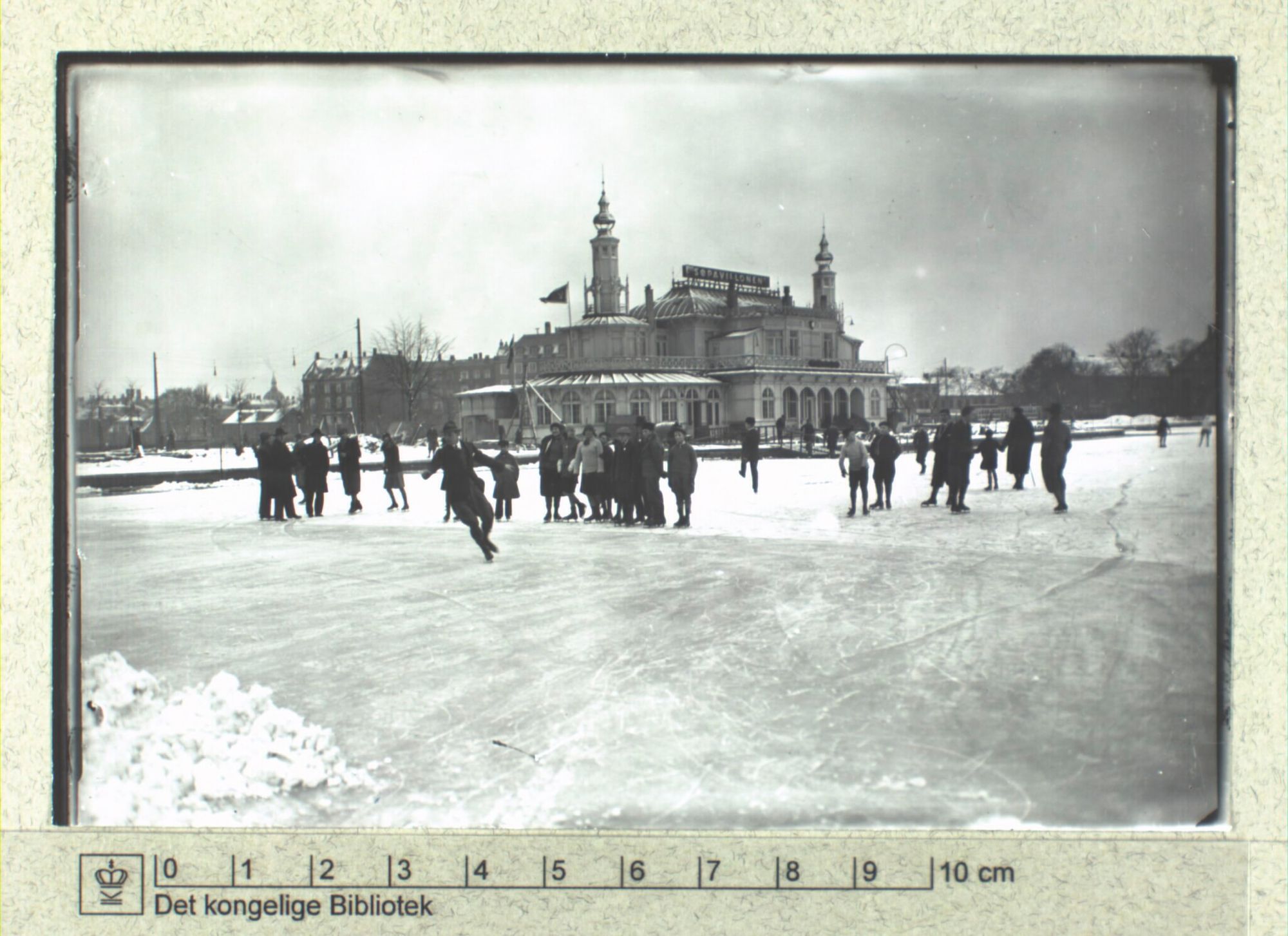
Construction, permitting, disassembly - doing that every year was a hassle. But in Vilhelm Dahlerup, there was a high-profile architect who’d been itching to build something here, and an ambitious restaurateur offered to pay the skating association’s building costs in return for free use of the premises for the next ten years. So in 1894 this half-timbered clubhouse, with offices, dining facilities, a banquet hall, etc. opened. A little gothic, a little turkish, an eclectic bit of everything - a sort of a playful historicist stage prop on the lakes.

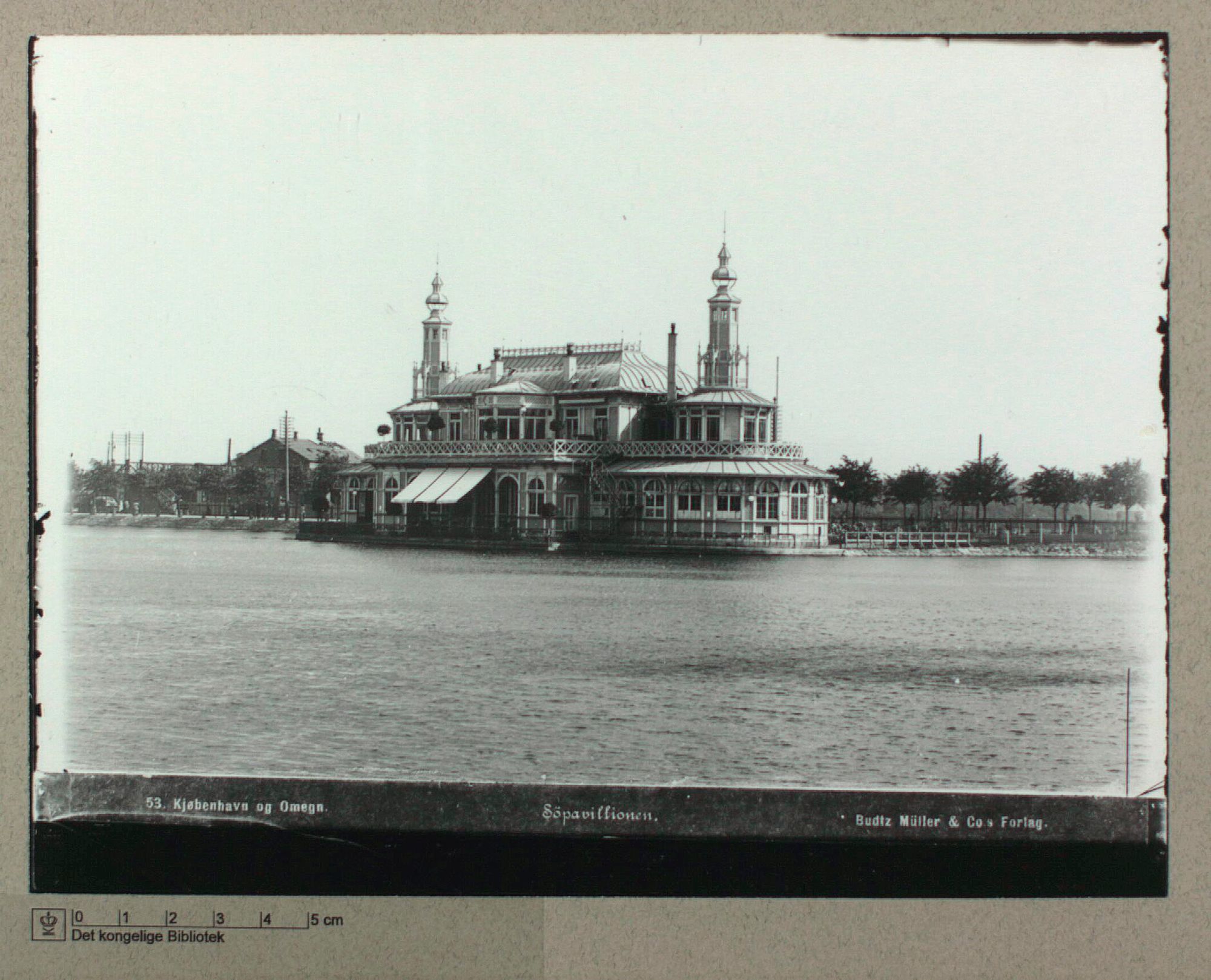
1894 article in Dannebrog about the construction of the new skaters' clubhouse; a Budtz Müller & Co. photo of the pavilion from between 1895-1900, Det kongelige Bibliotek
Dahlerup was one of the architects who was in the right place at the right time, as the rapidly growing city spilled past its old ramparts in the late 1800s. He helped define modern Copenhagen, designing the old Royal Theater, Statens Museum for Kunst, and Jorcks Passage. Carl Jacobsen’s favorite architect, he built a ton of stuff for Carlsberg as the brewery became Denmark’s biggest, including Ny Carlsberg and Glyptoteket. Dahlerup also exerted his influence on the lakes - he designed Dronning Louises Bro and a demolished iteration of Fredensbro - and had long wanted to build something on this site between Sankt Jørgens Sø and Peblingesøen. Previous Dahlerup proposals here included a huge Gothic church that stepped down onto the water and a (potentially tongue-in-cheek) take on the Eiffel Tower.
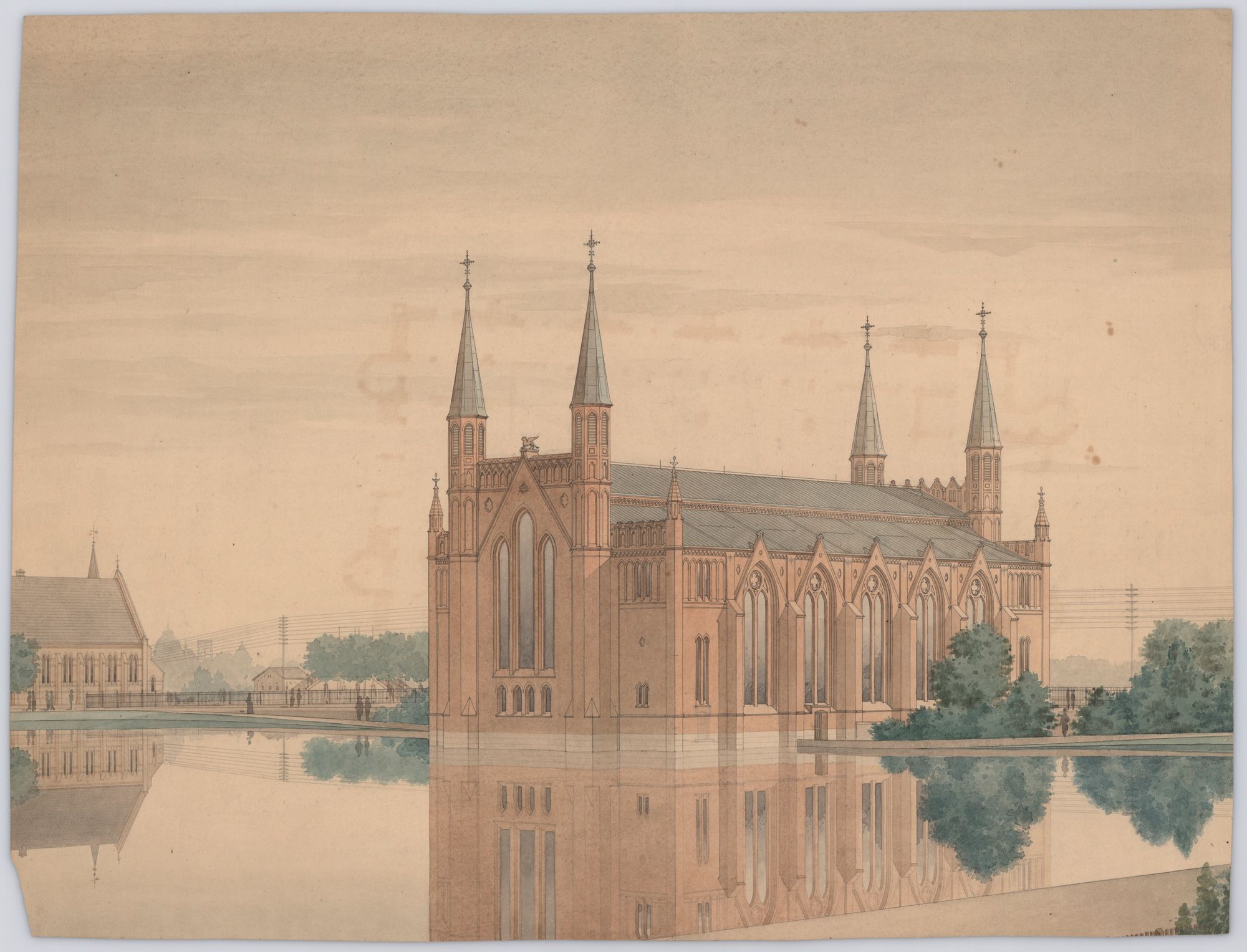
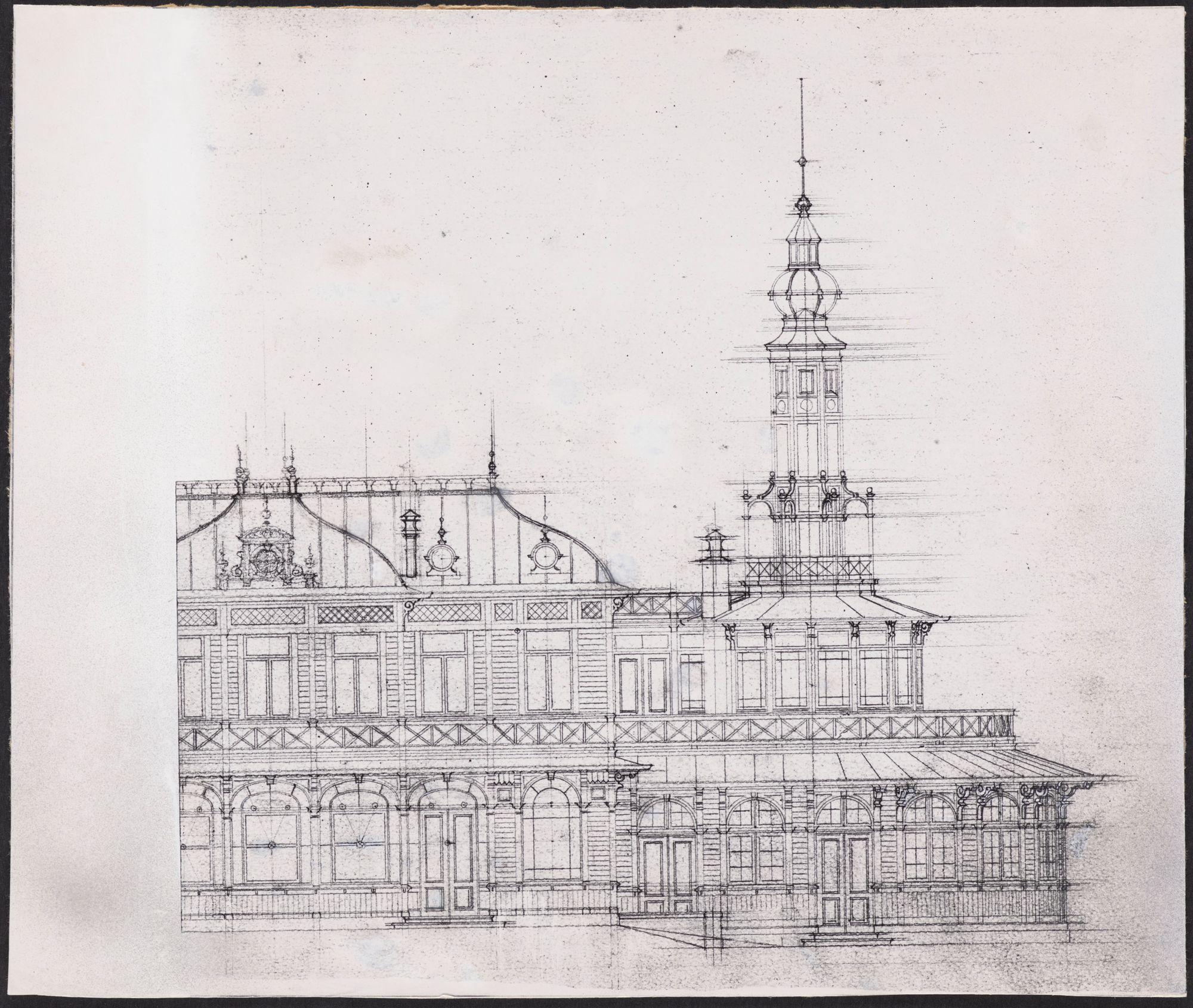
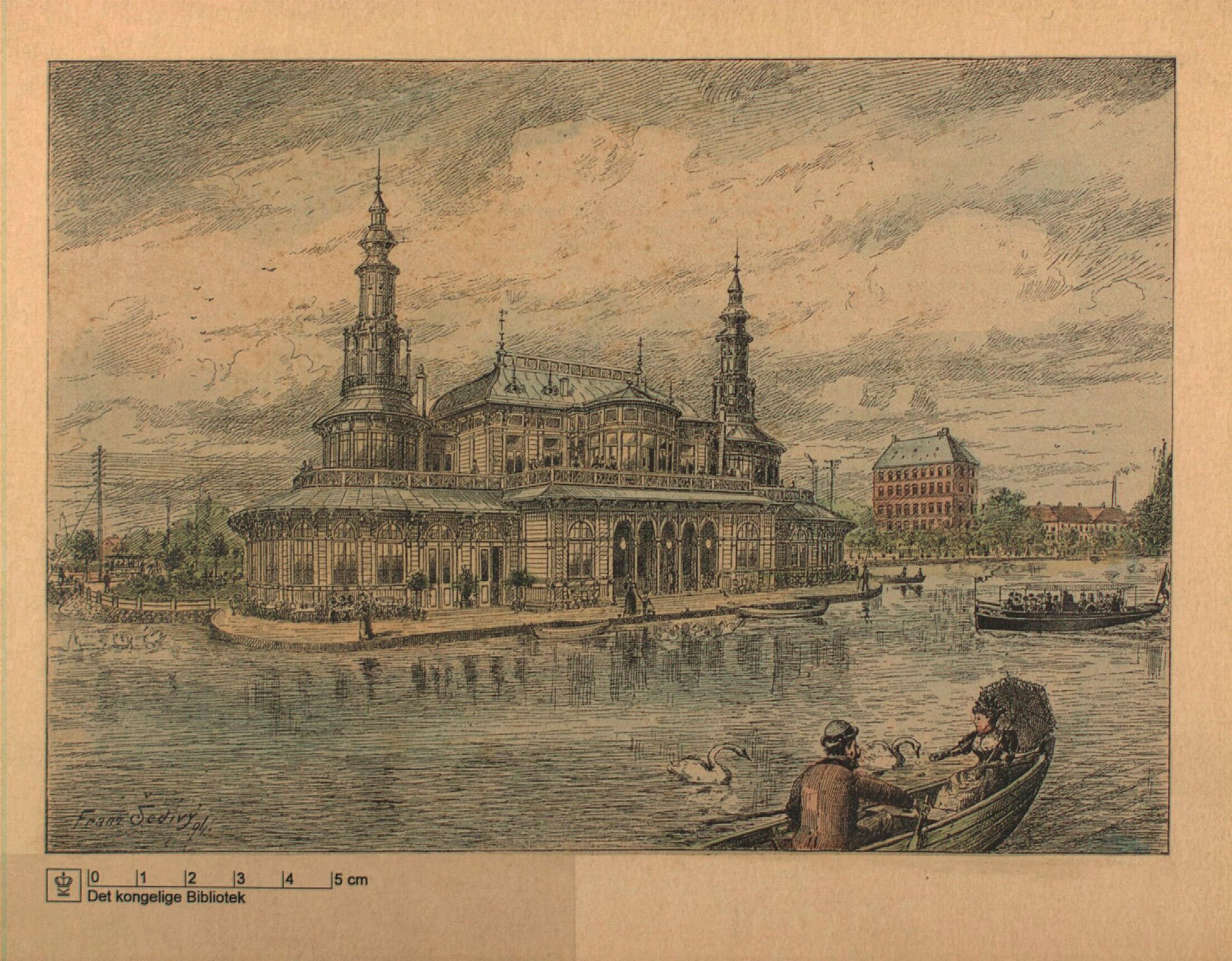
Dahlerup proposal for a gothic church on Peblingesøen, Det kongelige Bibliotek; Dahlerup sketch of a pavilion, 1894, Det kongelige Bibliotek; Franz Sedivý sketch of Søpavillonen, Det kongelige Bibliotek
While the Søpavillon has survived all these years relatively unchanged, there are a couple differences you can spot between the postcard and the photo. One, there’s that addition to the front of the building, bringing it closer to Gyldenløvesgade. Built in 1925, it was designed to match the original. Two - yes, parts of the lake surrounding the Søpavillon were filled in 1929, replaced with wrought iron fenced rose gardens. It was part of Copenhagen city architect Poul Holsøe’s changes to the lakes, where Holsøe worked with Emil Engell to bring the flaneurs and flaneuses of Copenhagen closer to the water by installing paths directly on the lakefront. In 1994, the rose gardens were themselves replaced by fountains.
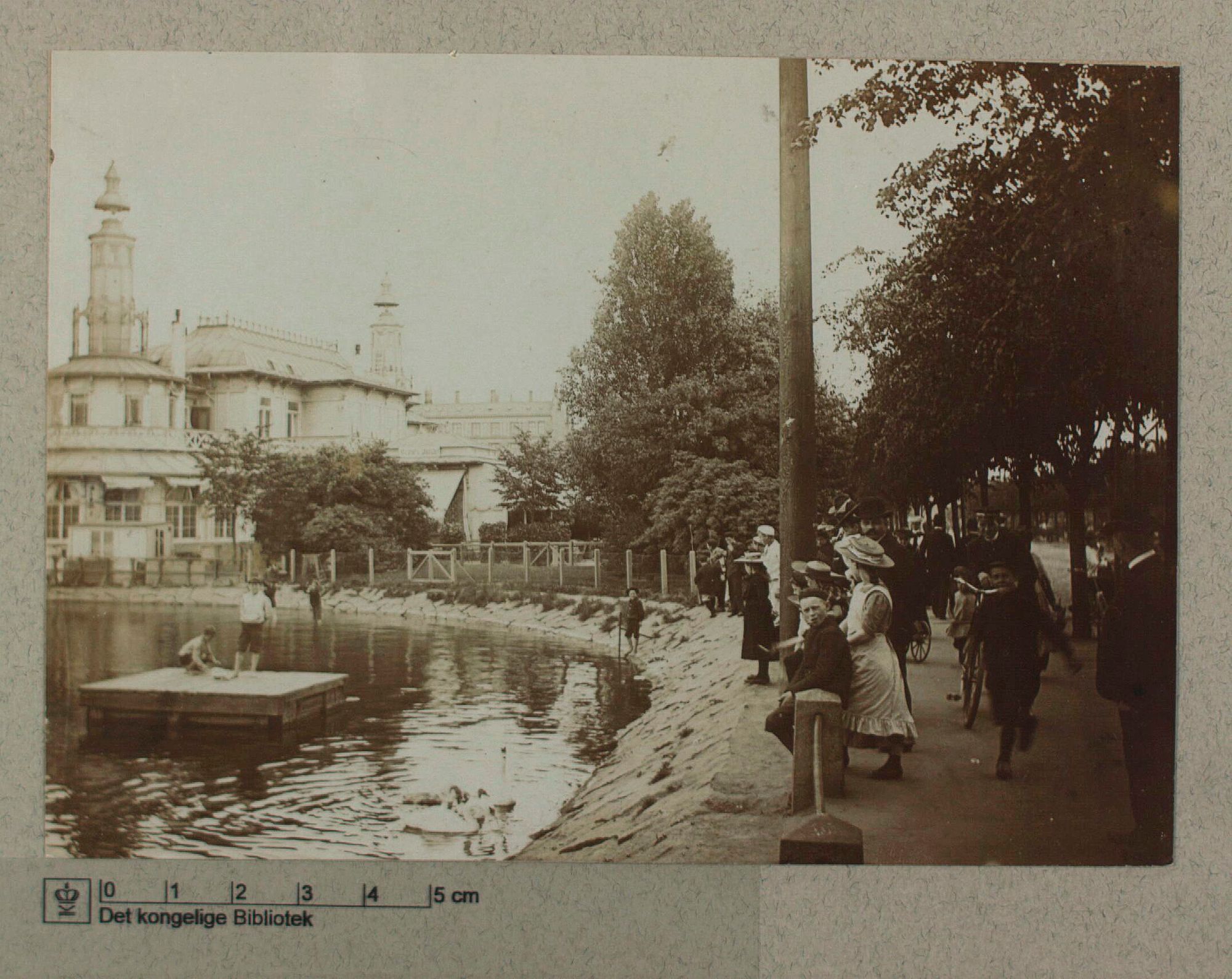
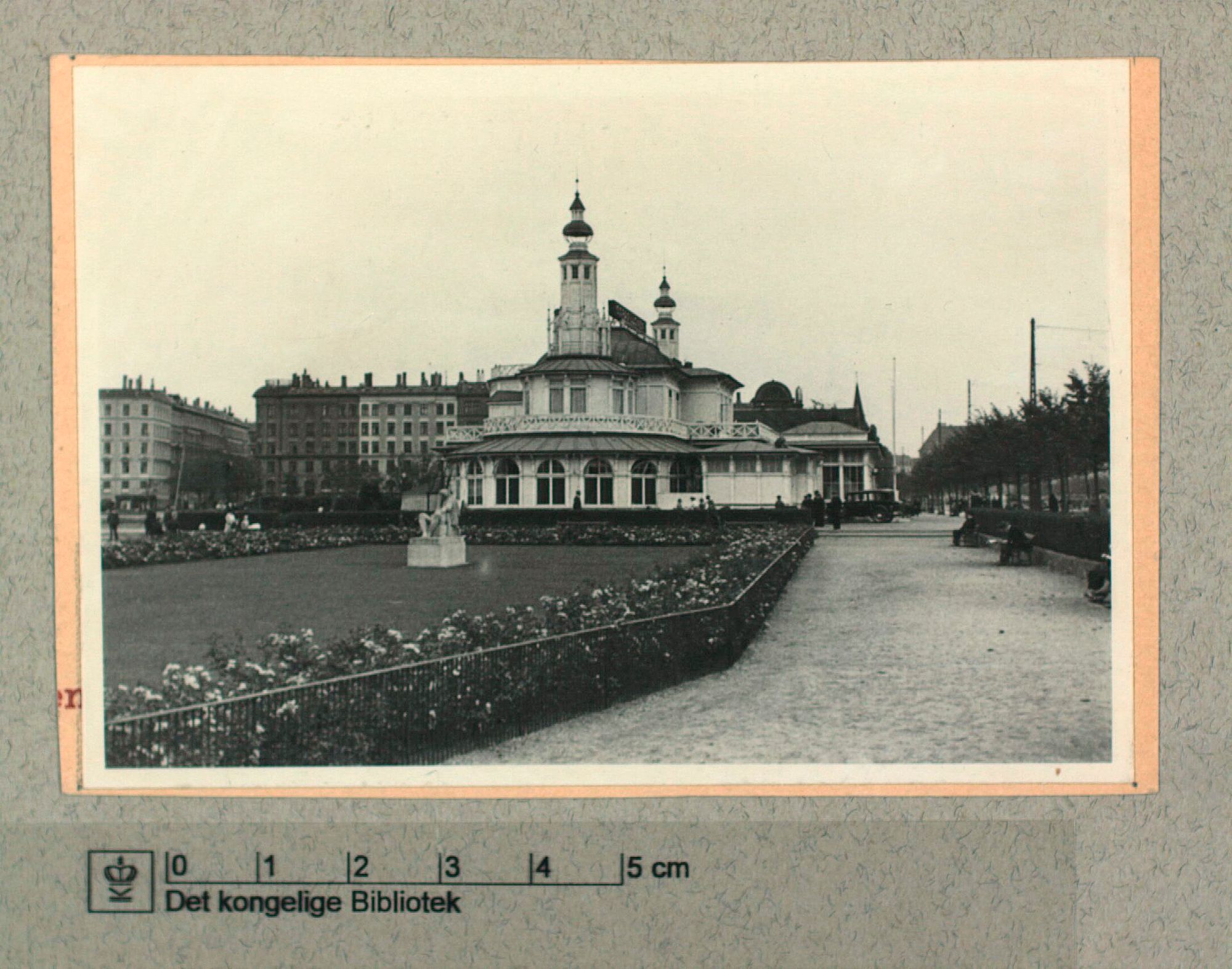
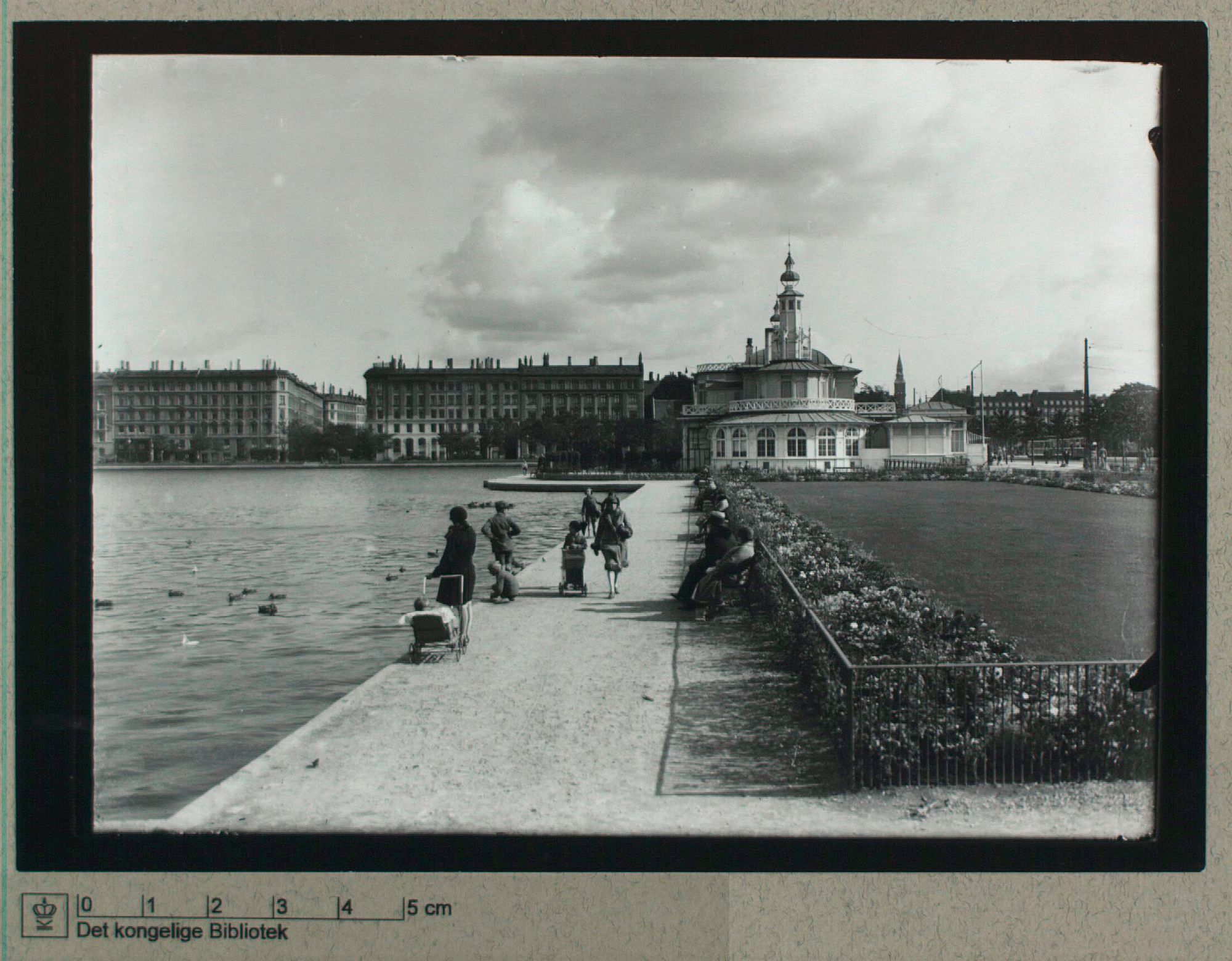
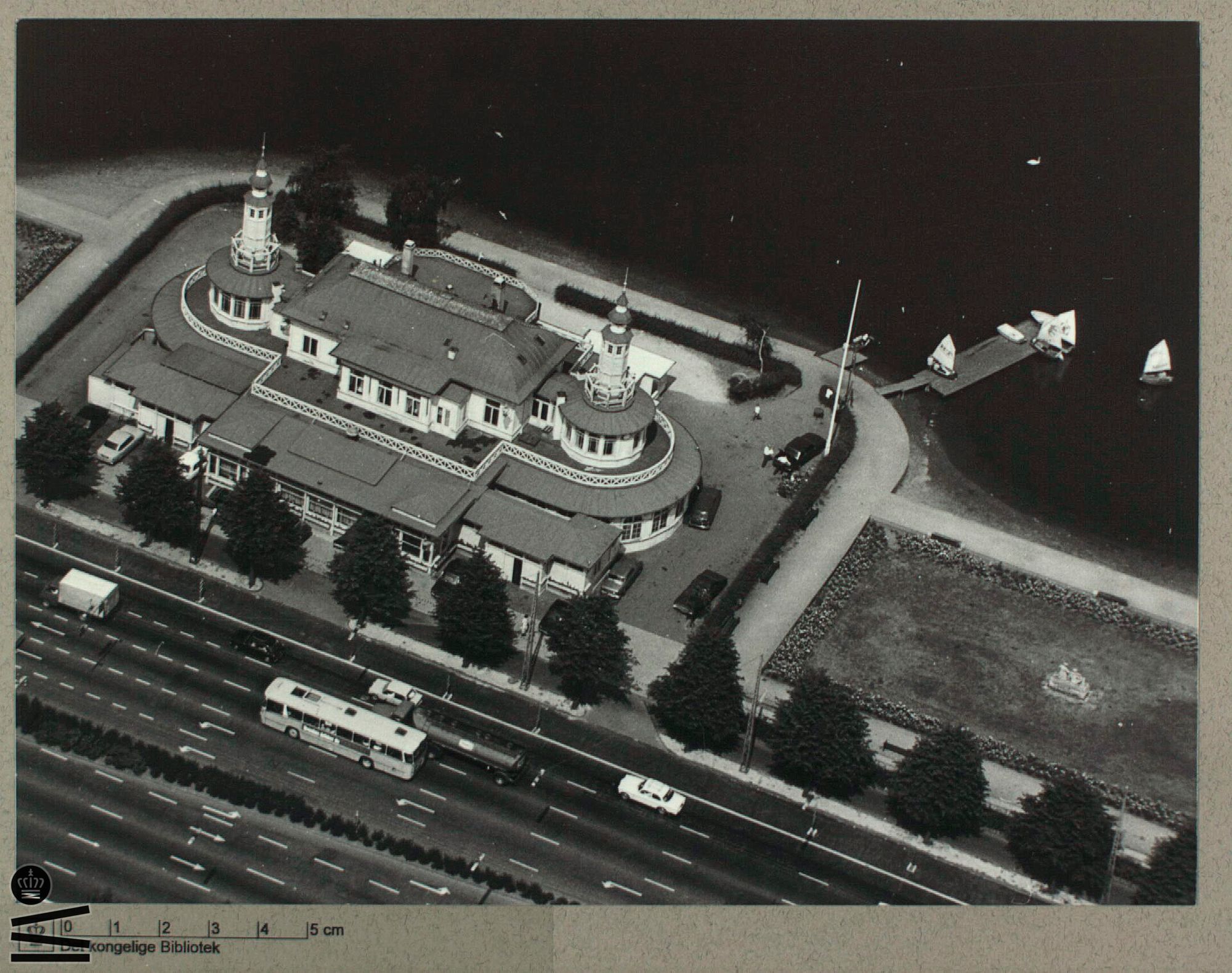
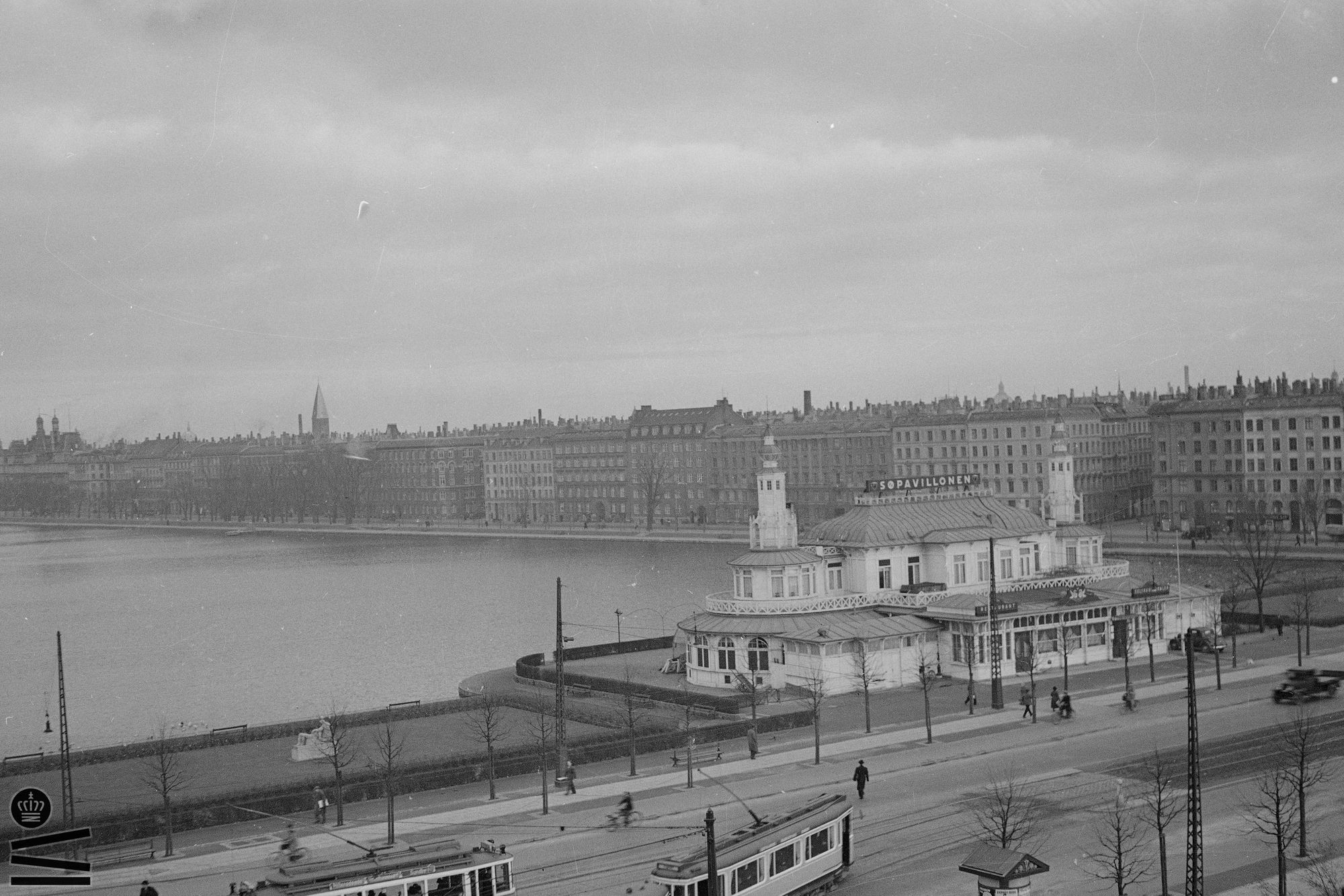
Undated photo from before the filling in of the lake around Søpavillonen, Det kongelige Bibliotek; 1934 photo with the rose garden on the fill, Det kongelige Bibliotek; undated Carl Stenders Kunstforlag photo of the lake edge, Det kongelige Bibliotek; a Tage Rugaard aerial photo of the Søpavillonen, Det kongelige Bibliotek; Jonals Co., 1930s or 1940s, Det kongelige Bibliotek
The ice skaters moved to Østerbro in 1960. Legendary smørrebrød joint Oskar Davidsen, at that point run by Ida of the fourth generation of the Davidsen family, opened in the building in 1965. Søpavillonen has been a restaurant or club ever since.
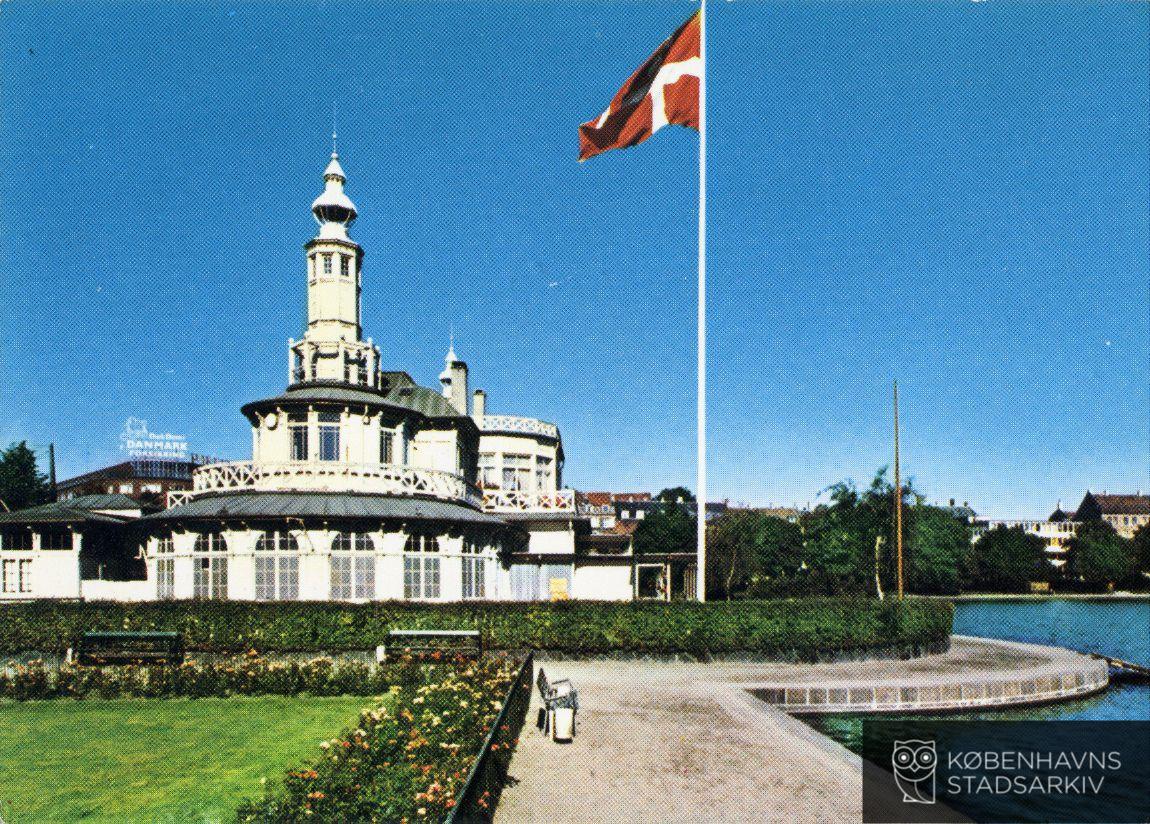
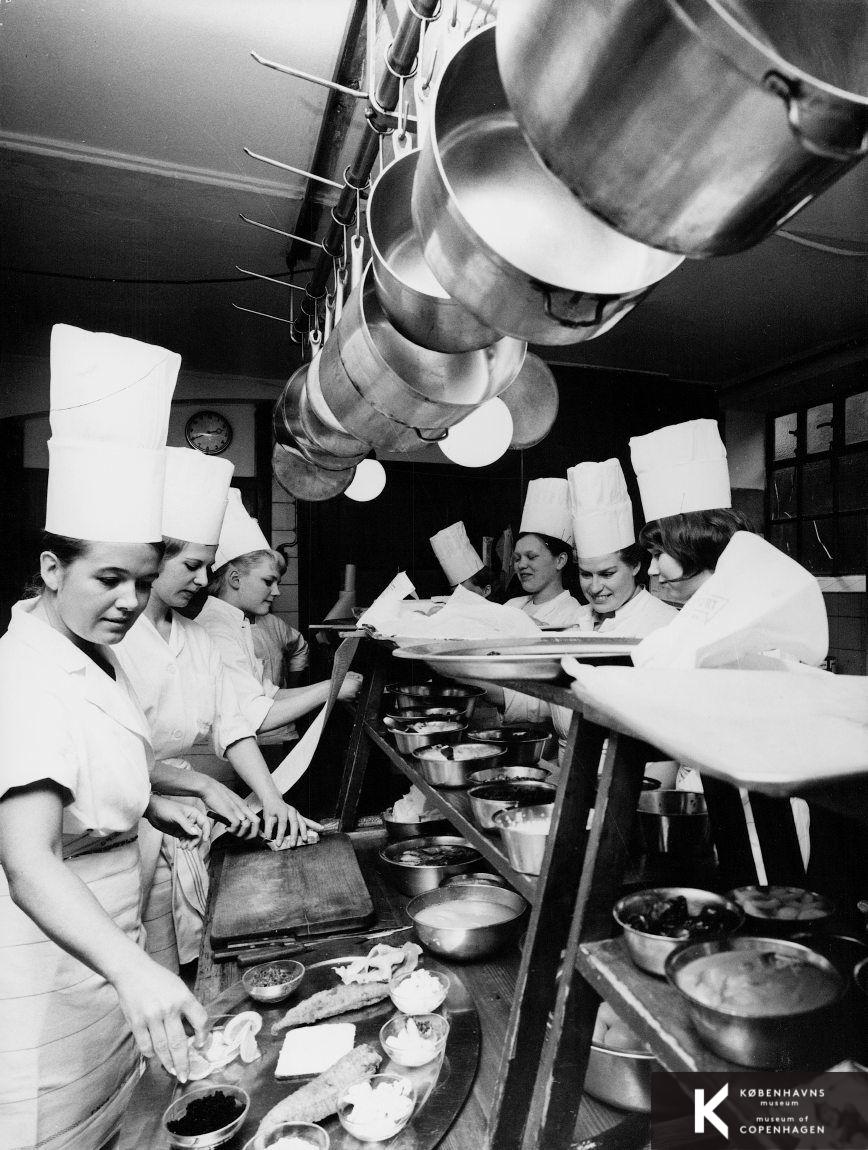
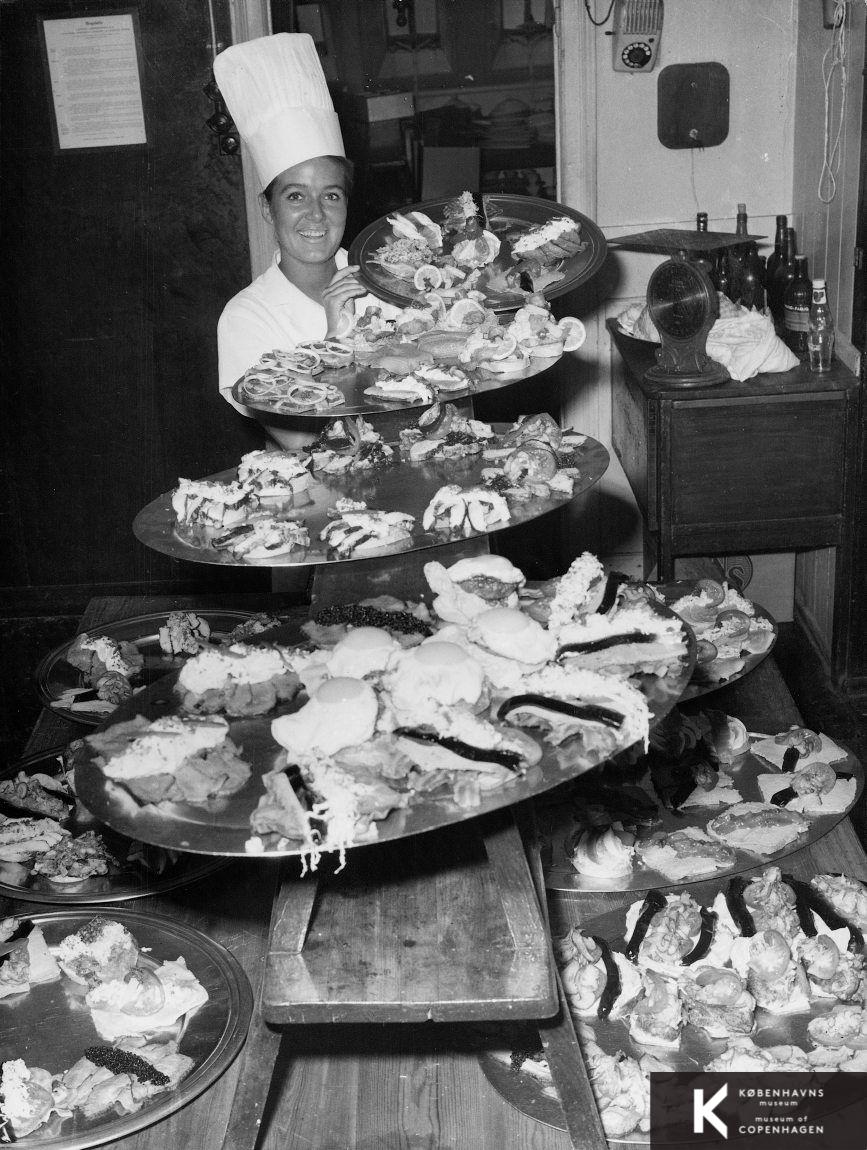
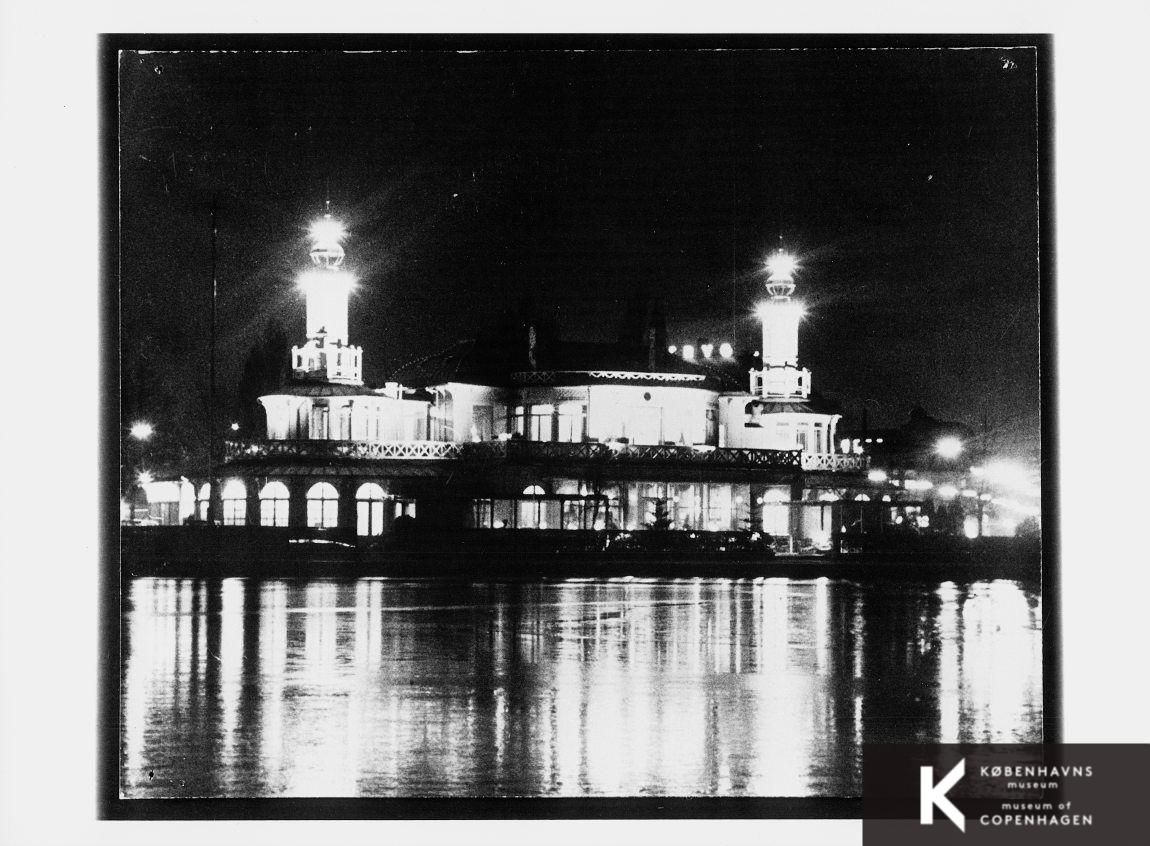
1960s photo of Søpavillonen, the Musem of Copenhagen; two undated photos of the kitchen at Oskar Davidsen restaurant inside of Søpavillonen, the Museum of Copenhagen; 1966 photo of Søpavillonen at night, Lars Faurschou Christensen, the Museum of Copenhagen
…which is a real shame, given what could’ve been. Proposed in the belief that a public pool could be enjoyed by a larger portion of the local population than a restaurant, bringing a world-class amenity to the edge of a struggling Nørrebro, architect Jørn Utzon designed a pool hall for this site in 1979. Financing was in place, Lord Mayor Egon Weidekamp was in favor, and…it didn’t happen. Public outcry at the demolition of Søpavillonen and anger that the swimming hall would be located on the outskirts of Nørrebro rather than in the heart of the neighborhood killed the plan, and instead the building was listed as a landmark in 1984.
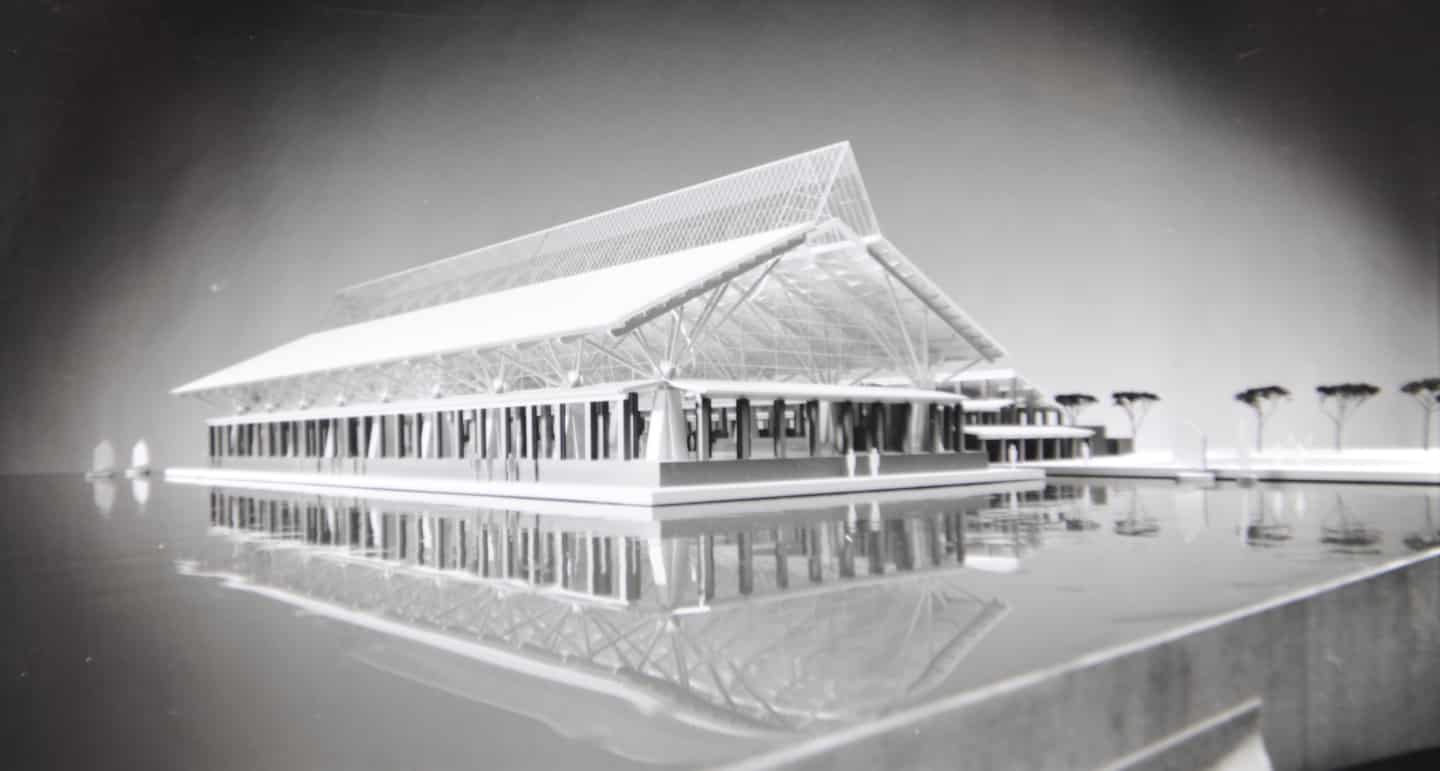
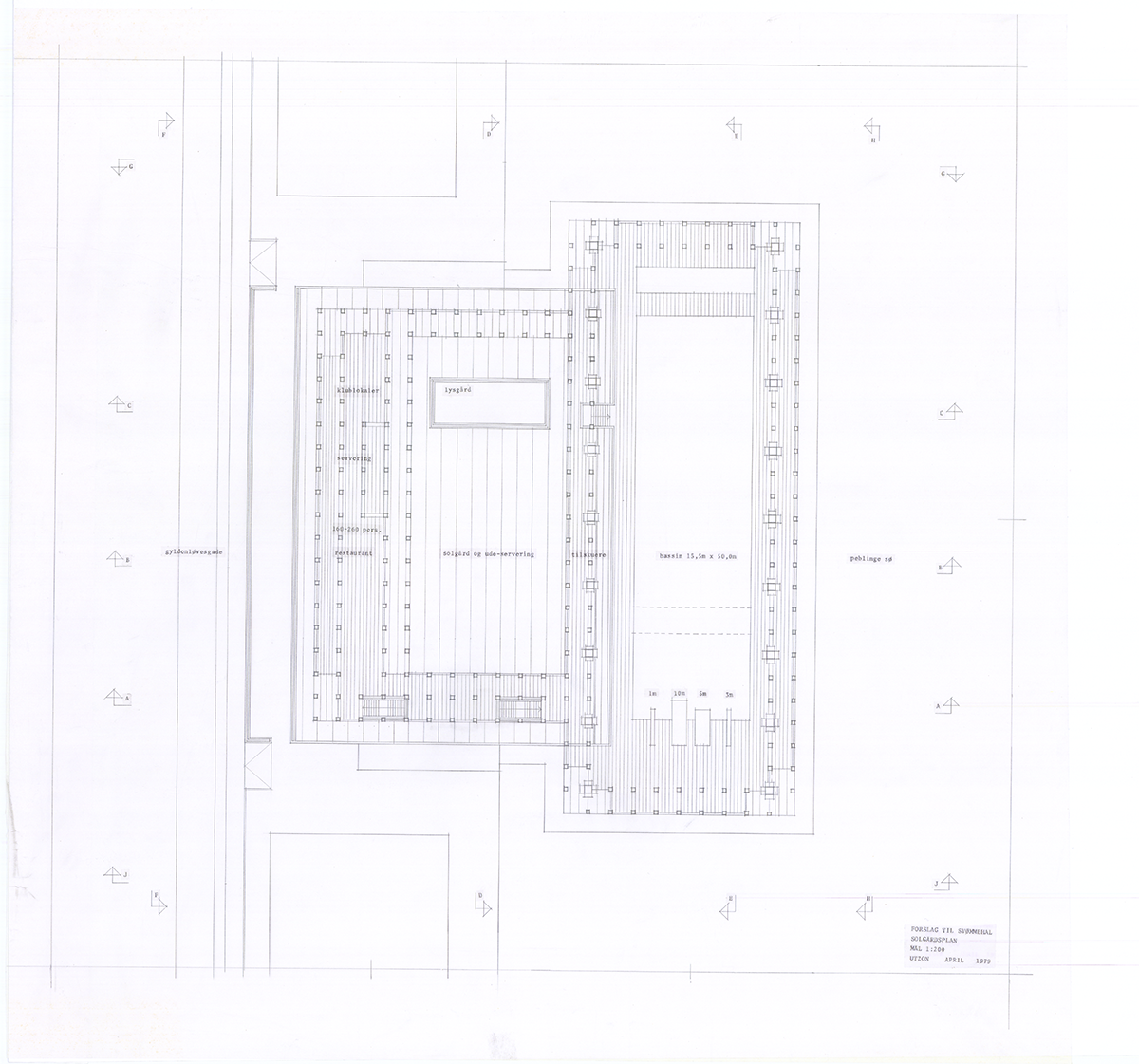
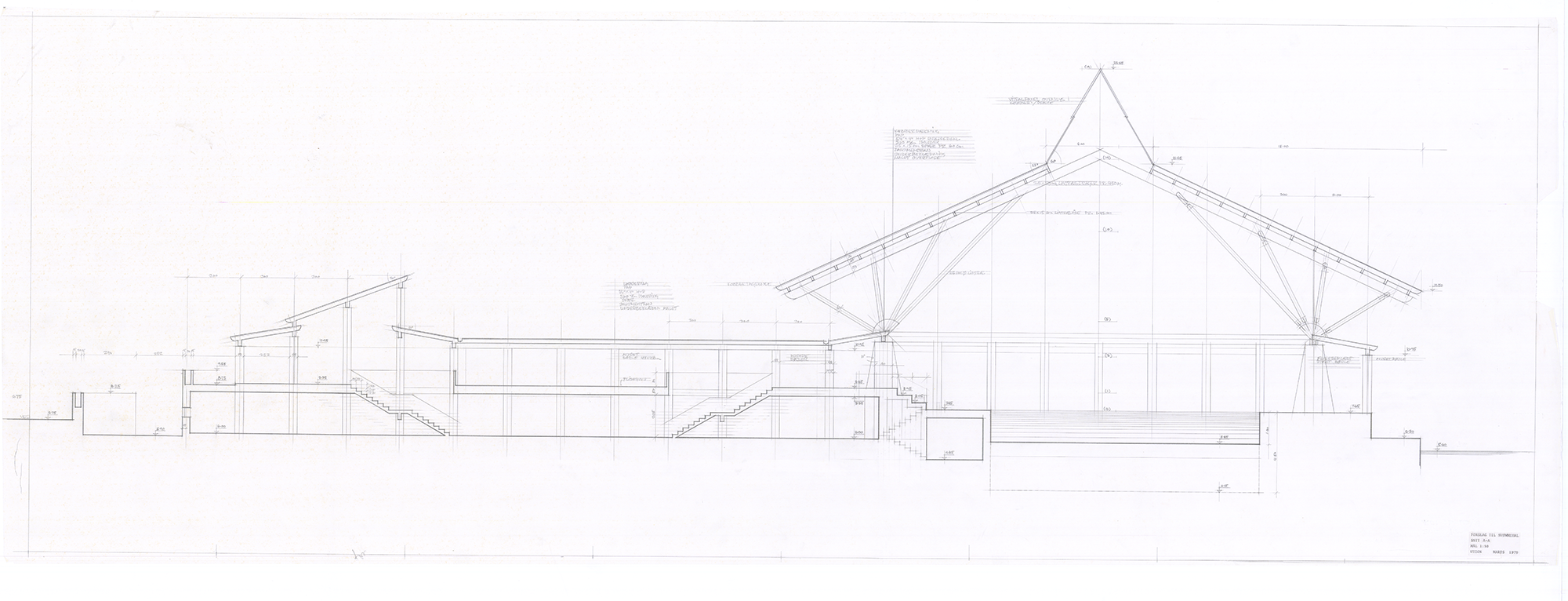
Jørn Utzon proposal for a swimming hall on the site, Utzon Archives, Aalborg University & Utzon Center
A variety of mildly seedy clubs and questionable restaurants have cycled through ever since - thus the “Klamydiaslottet” nickname. The well-known Copenhagen club owners Simon Lennet and Simon Frank, together with chef Frederik Bille Brahe, are hoping to break that cycle with Restaurant Babylon. In describing their thoughts behind trying to revive the glory days of Søpavillonen, the Simons put it in an interview, "things that can be alluring and repulsive at the same time have really always appealed to us”.
Production Files
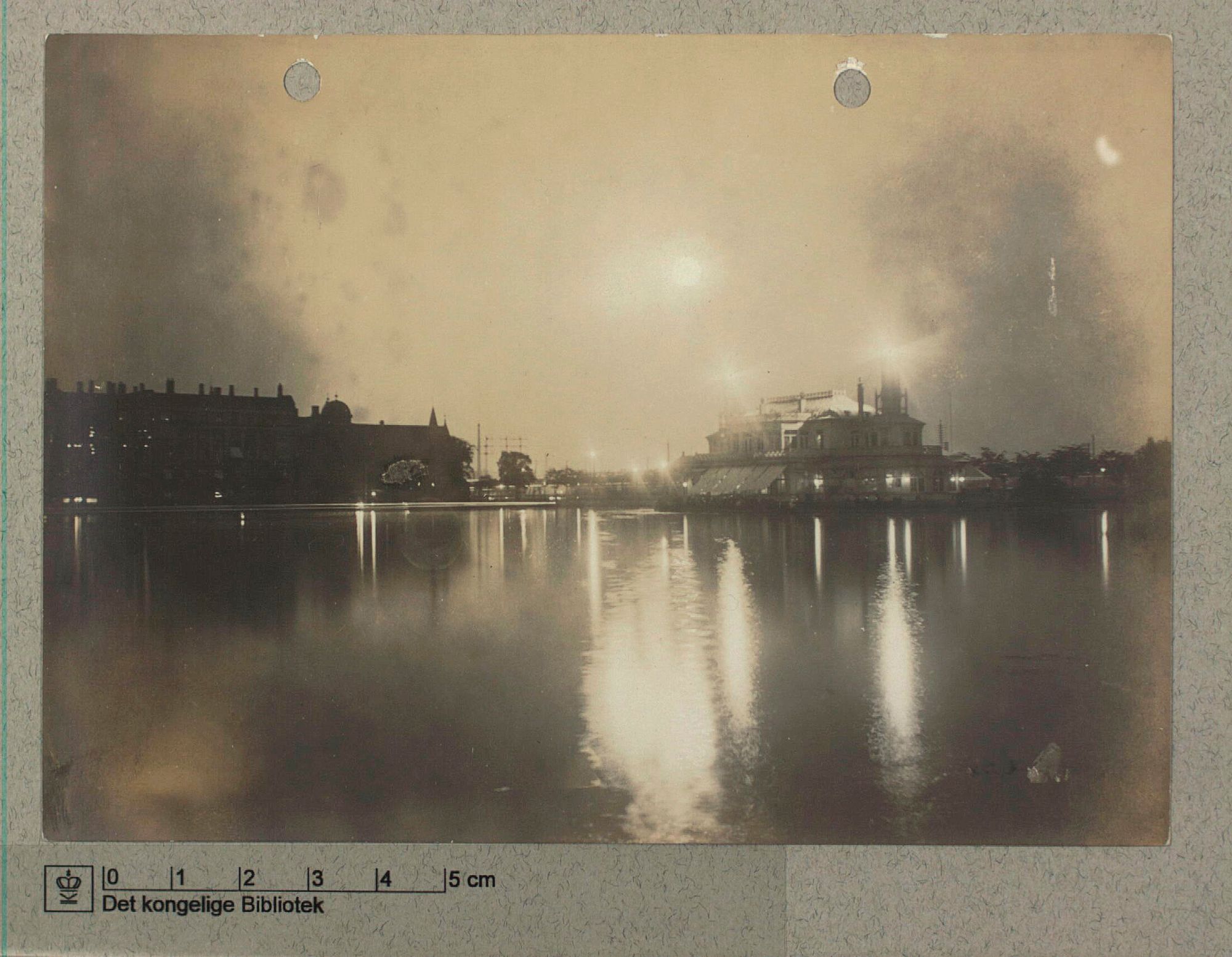
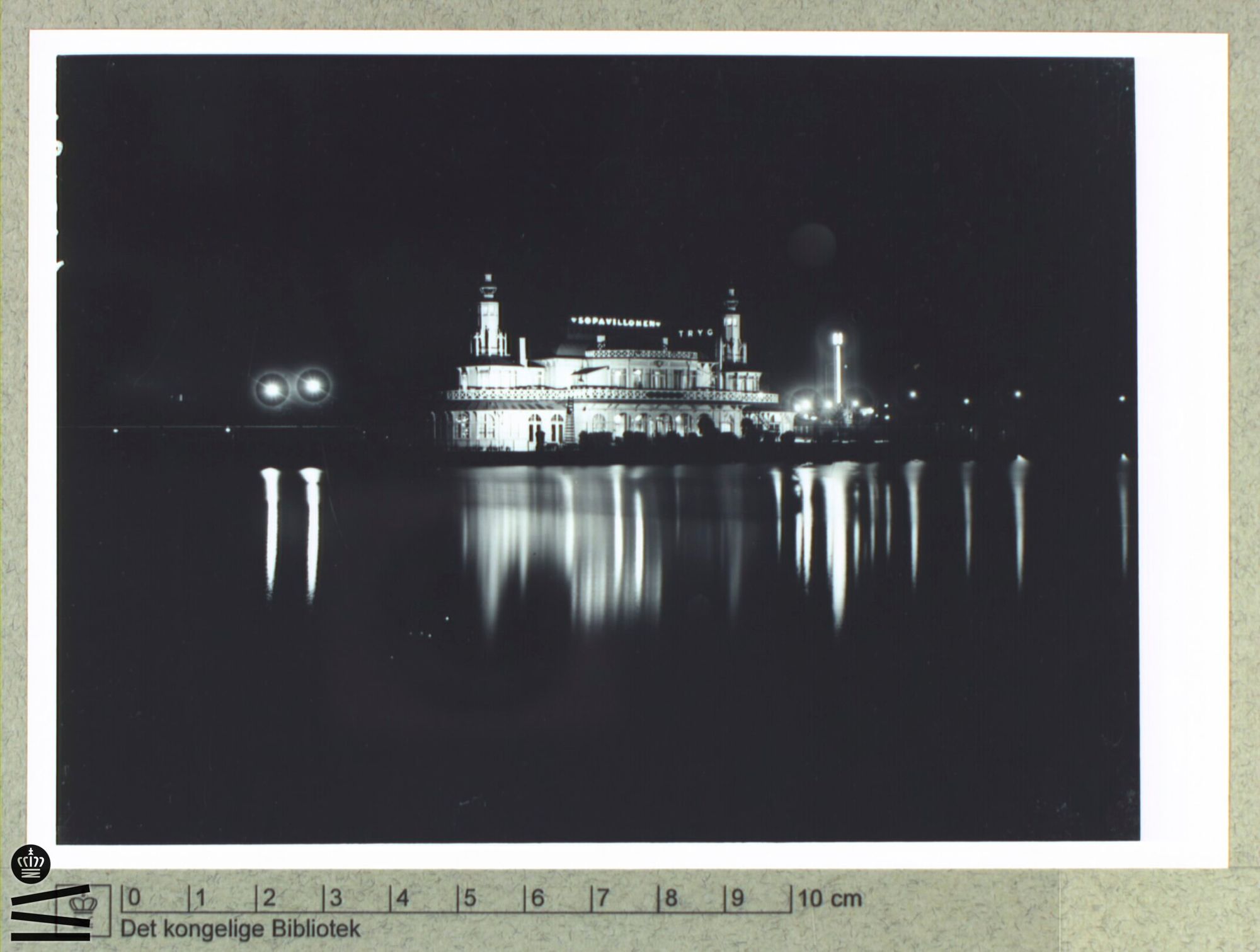
Søpavillonen at night: 1900 via Det kongelige Bibliotek and by Sven Türck, undated, via Det kongelige Bibliotek
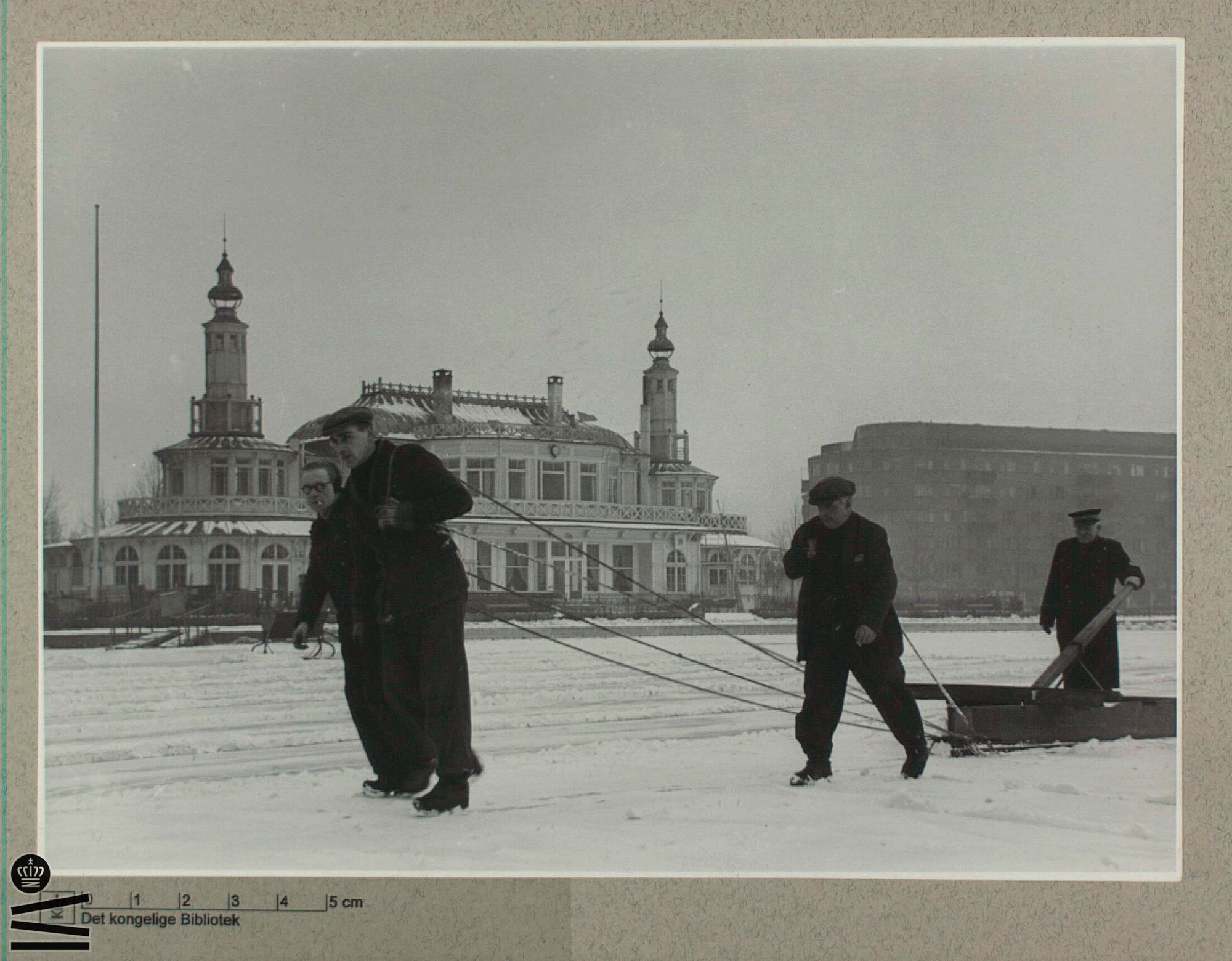
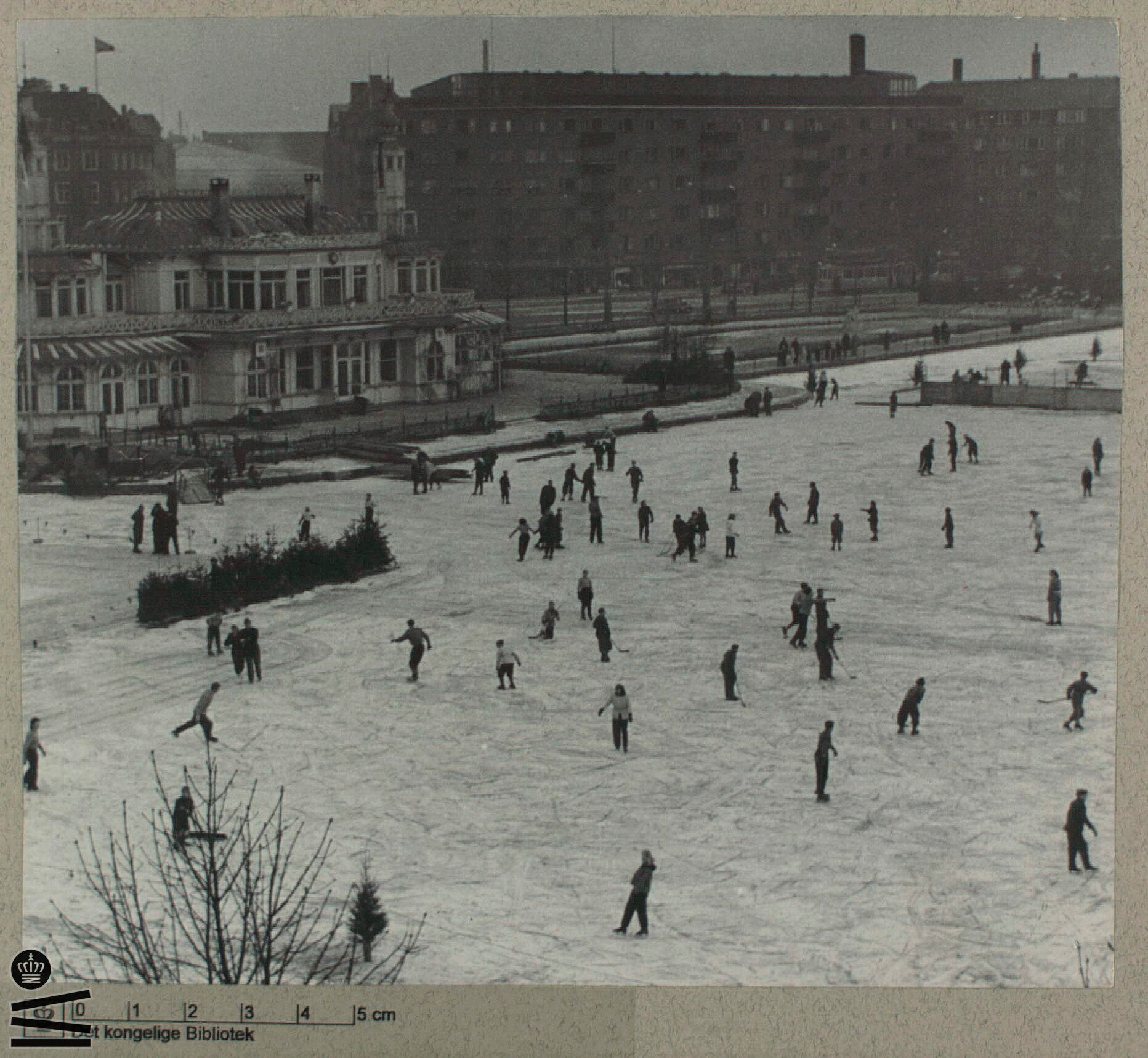
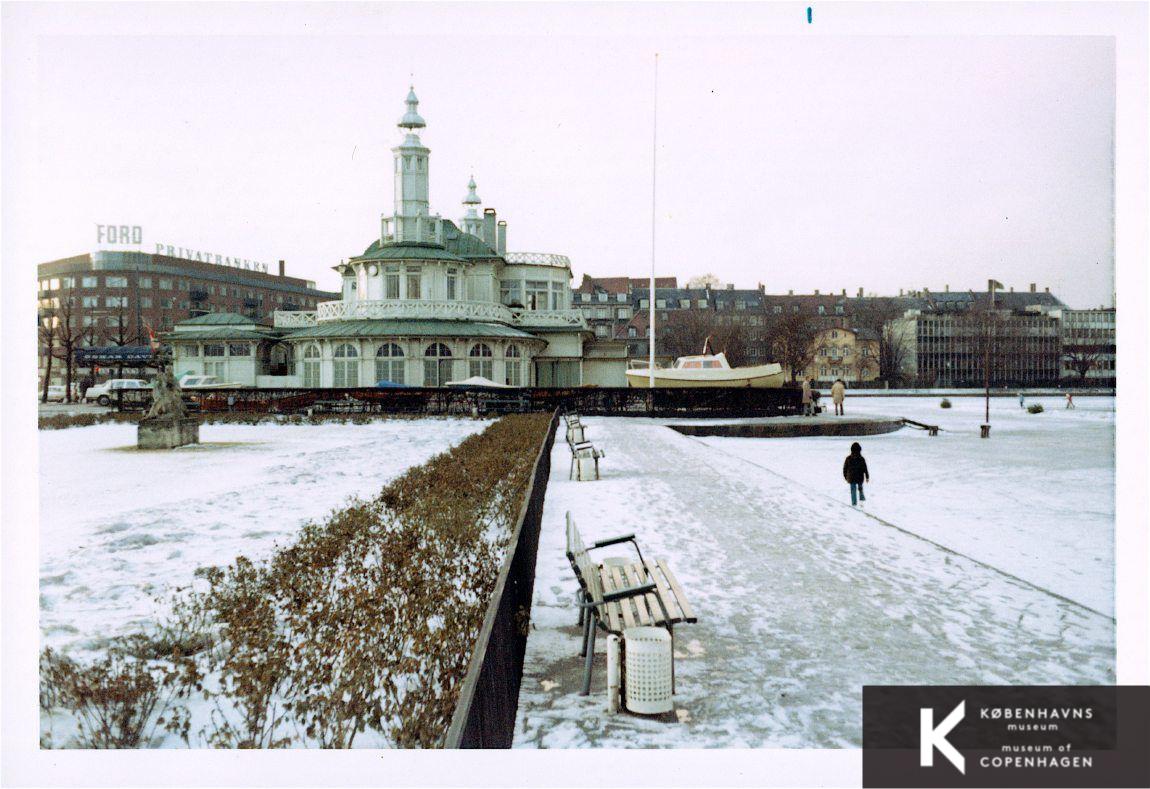
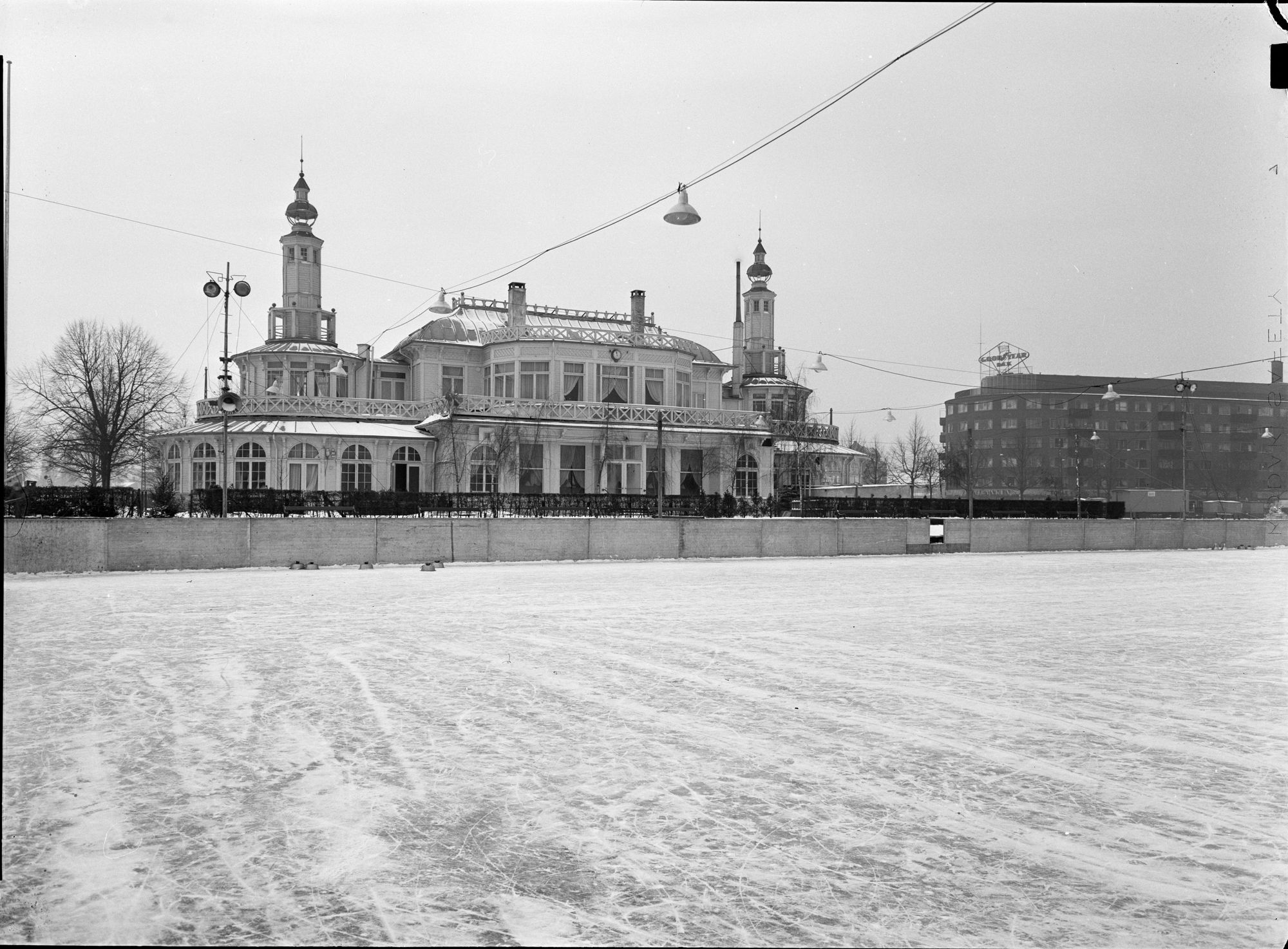
Ice skaters and Søpavillonen: John W. Hartmann, undated, Det kongelige Bibliotek; 1948 by Hakon Nielsen-Edsberg, Det kongelige Bibliotek; 1970 via the Museum of Copenhagen; Sven Türck, undated, via Det kongelige Bibliotek
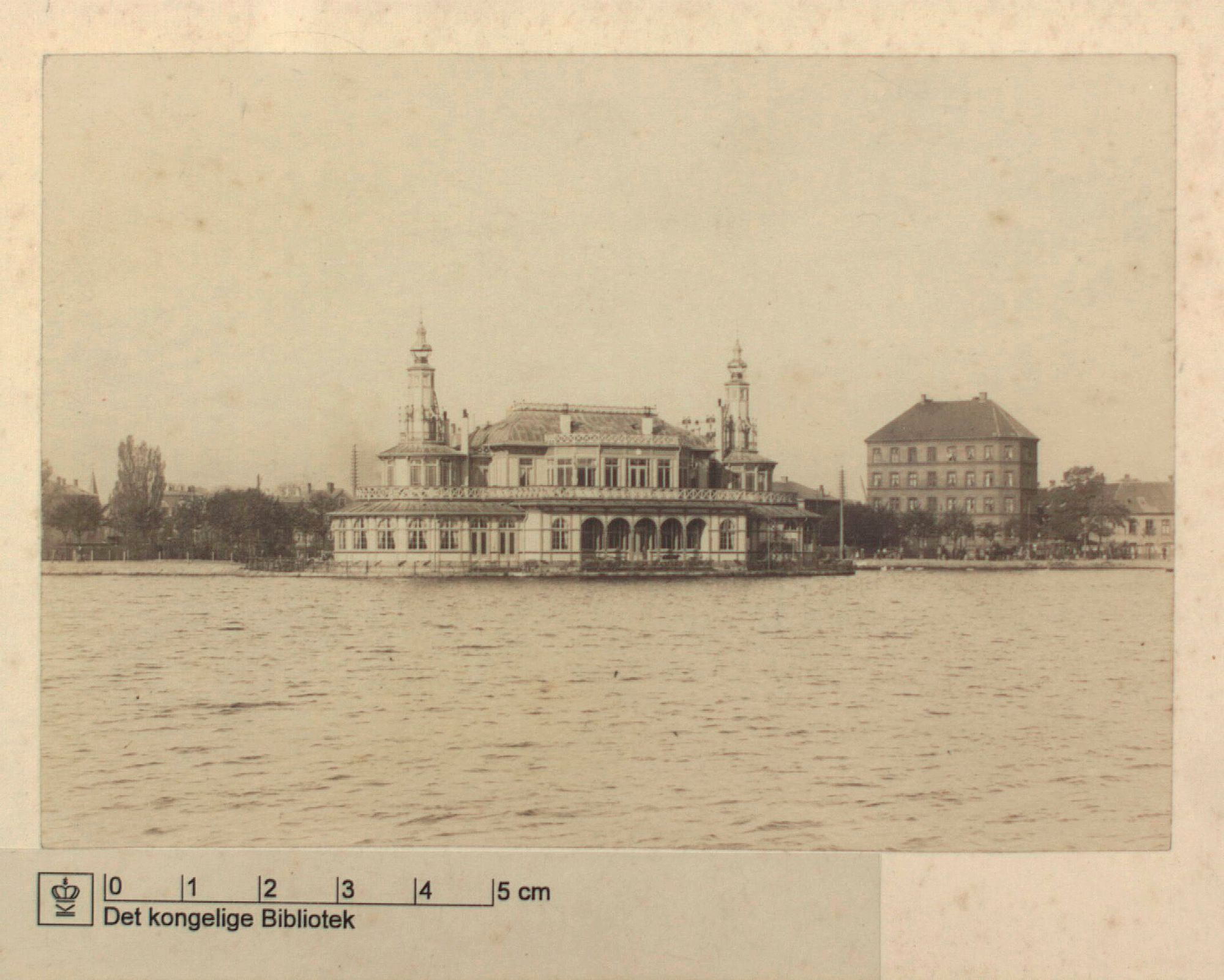
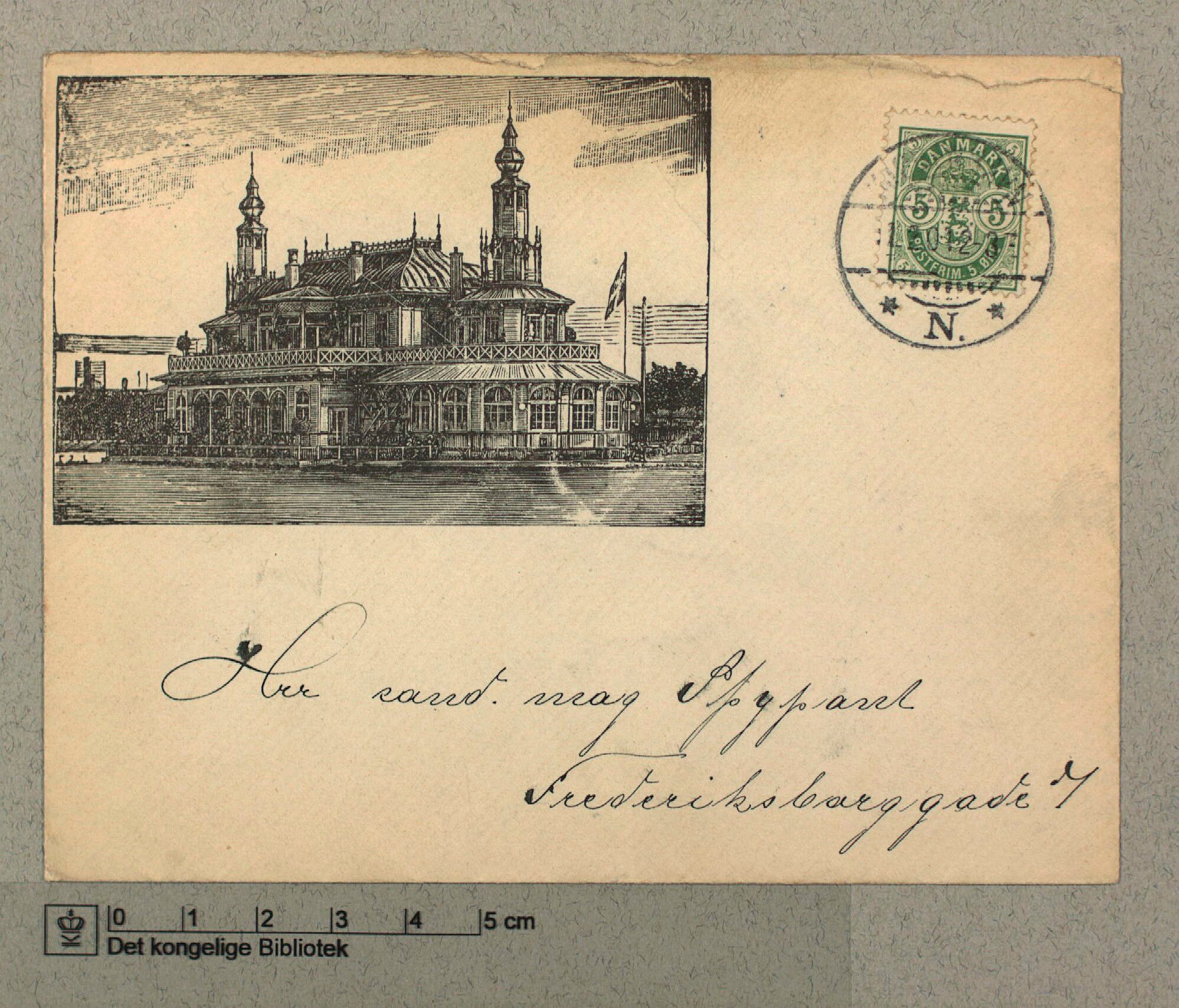
1900 photo from Det kongelige Bibliotek and 1904 envelope with sketch, Det kongelige Bibliotek
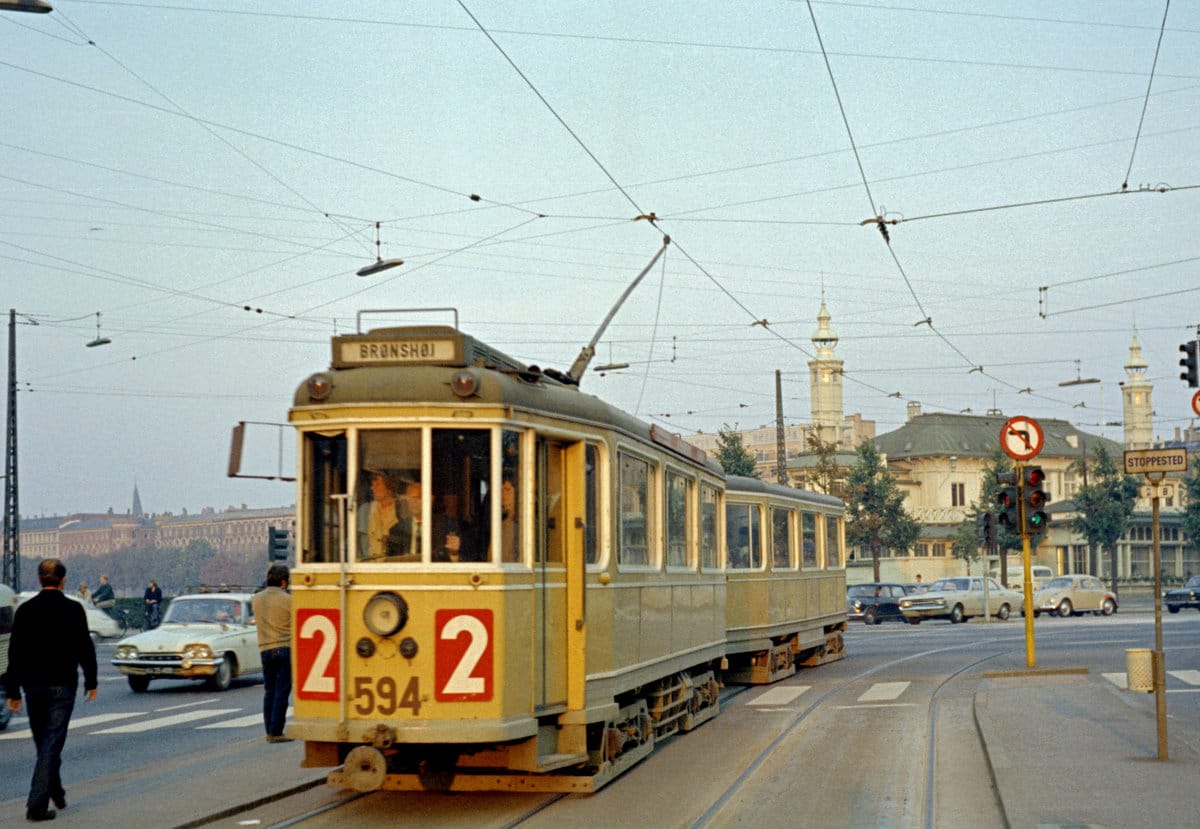
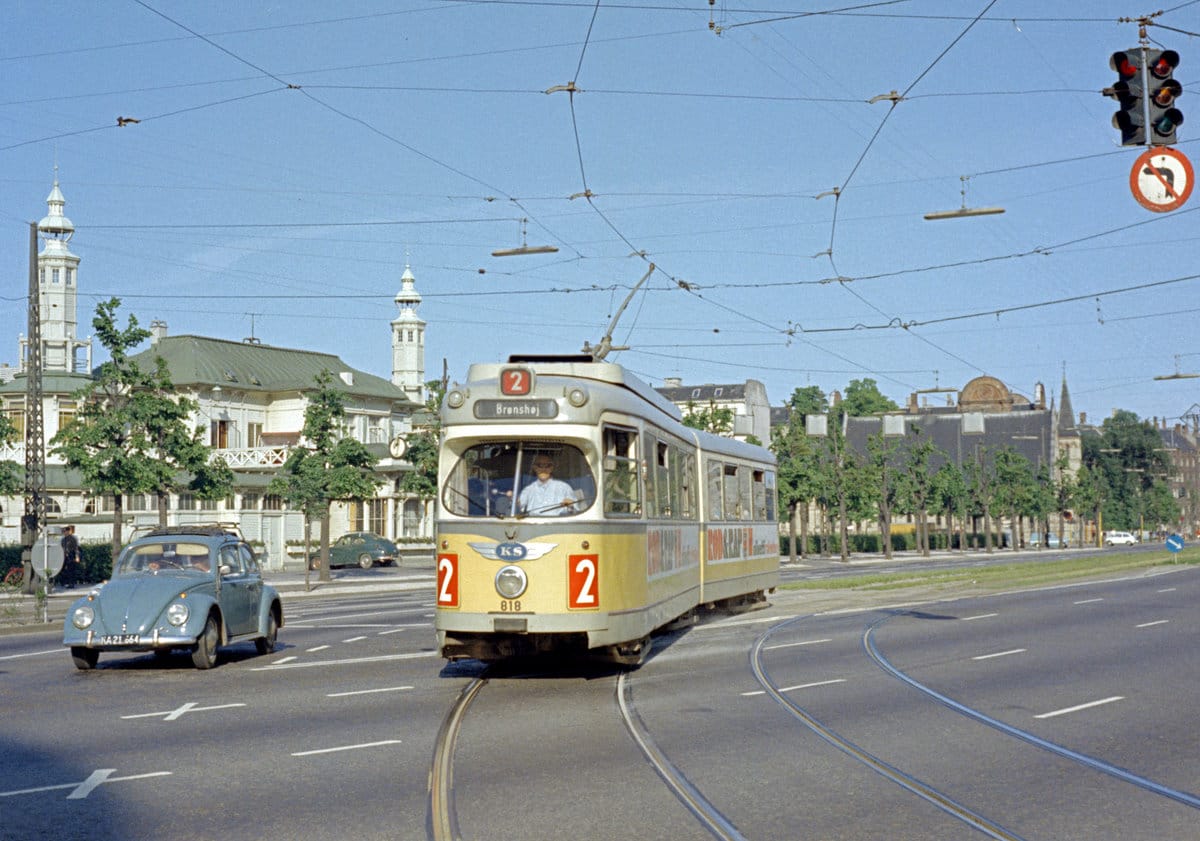
In the background of two 1969 Kurt Rasmussen photos of the #2 streetcar, Wikimedia Commons (left) and Wikimedia Commons (right)
Further reading:
- The Danish Agency for Culture and Palaces landmark listing report
- Utzon's never-built swimming hall discussed in this article about Copenhagen projects that never came to fruition
- Documentation of the never-built Svømmehal Peblingesøen in the Utzon Archives
- Pretty comprehensive article on the building in Berlingske
- A bizarrely and charmingly comprehensive geocache about the building - seriously, this is actually one of the most comprehensive things I read
- Kings of the Chlamydia Castle: a feature on the new owners and what they're hoping to achieve here
- The building's Klamydiaslottet reputation in well known enough that it was spoofed in this April Fools' Day article, "No Fest without a Test"

Member discussion: